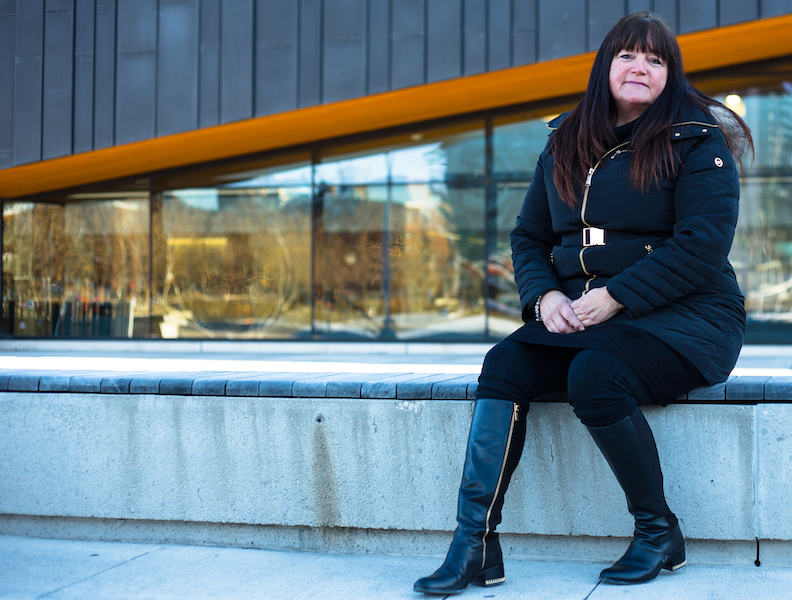What it means to ‘Indigenize curriculum’

Lynn Lavallée (pictured) and Cary Miller plan to publish findings from the research project in a public report. Photo: Kaytee Dalton.
A new research project led by Lynn Lavallée, FCS strategic lead, Indigenous resurgence, and Cary Miller, head of Native Studies, University of Manitoba, will systematically explore how universities across Canada are ‘Indigenizing curriculum’, and provide recommendations for change. The Learning and Teaching Office at Ryerson University is providing funding support for the project.
In 2015, the Truth and Reconciliation Commission of Canada (TRC) (external link, opens in new window) published its final report and released (PDF file) calls to action (external link, opens in new window) that aim to redress the legacy of residential schools and advance reconciliation across the country. The TRC called upon the child welfare, health, justice, education, and other sectors, to create critical changes in support of these goals. Since then, national momentum has been building for universities to ‘Indigenize curriculum.’
According to Lavallée and Miller, universities have made efforts to ‘Indigenize curriculum’ in a variety of ways. However, the models used by universities across Canada -- as well as by departments and faculties within the same institution -- vary widely and have not been systematically reviewed. “Many institutions are moving ahead without consideration of the impacts of the various models of Indigenization,” Lavallée says.
“The project will identify what ‘Indigenizing curriculum’ means to various stakeholders,” she says. “We’ll explore what it looks like, what models are being used, and whether any foundational topics exist. We’ll also take stock of strengths, weaknesses and lessons learned.”
While literature on ‘Indigenizing curriculum’ exists, it has not been brought together succinctly across disciplines, Lavallée explains. Moreover, while momentum is building now in the mainstream, Indigenous scholars from various disciplines have been conducting research in the area for decades, and their work has been largely ignored.
“The current Indigenizing exercise can learn from a cross-pollination of knowledge and experiences from various disciplines,” says Lavallée.
Indigenized curriculum development and delivery will likely look very different for educational institutions based on their geography and whether they are located in cities, rural communities, reserves or settlements. “Given that Indigenous knowledges are land-based … one pan-Indigenous approach is not appropriate,” says Lavallée.
Lavallée and Miller plan to publish findings from the project in a public report. Research outcomes will provide a valuable, evidence-based resource for post-secondary institutions across Canada to use in their own efforts to ‘Indigenize education.’